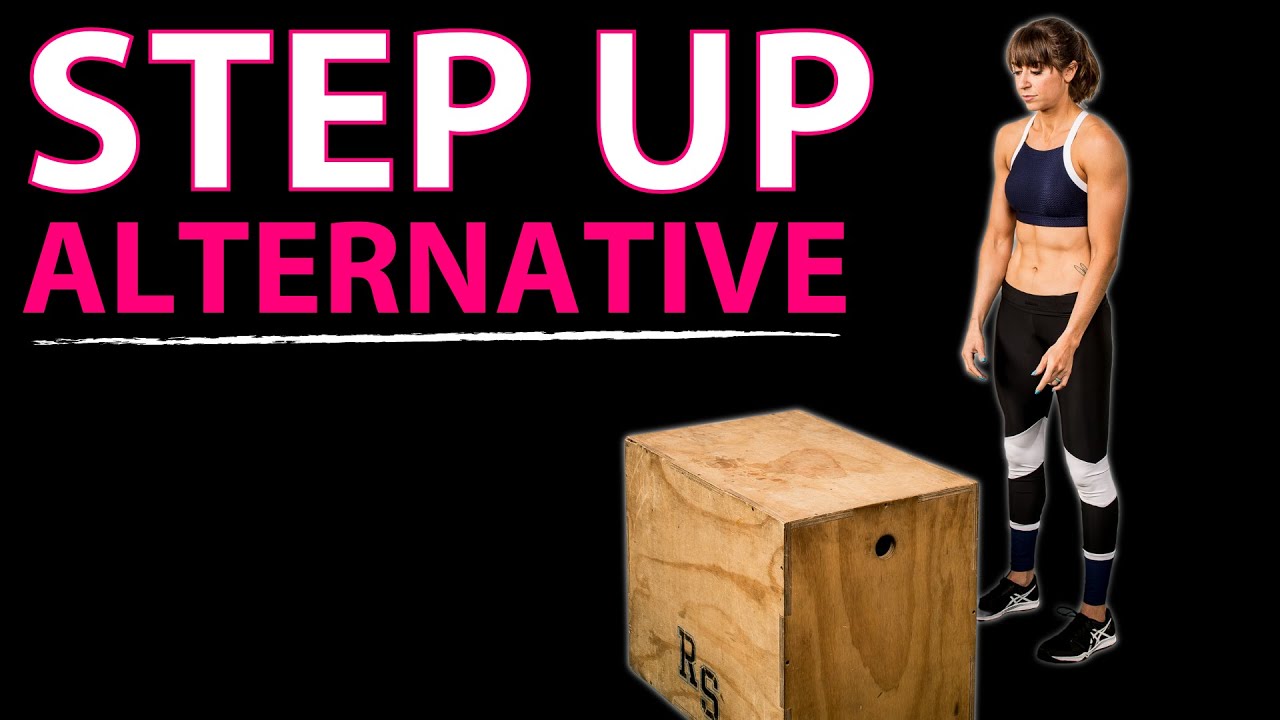
Hate Step Ups? Try this move instead!
Not every variation of every move is going to be right for you.
Especially if you’ve had injuries in the past you’re rebuilding from.
If you’ve struggled with knee or hip pain, especially on one side, you may want to focus on unilateral moves.
Unilateral, or one sided moves, can help you correct imbalances while making sure that your stronger side isn’t taking over and compensating.
They can allow you to rebuild that weaker side while also avoiding overloading the weaker side by doing a move that your weaker side can’t keep up on.
But what if you’re including unilateral moves like the step up and they are still a struggle? What if you want to target your glutes more because you tend to be quad dominant?
Well then this variation is exactly what you need…
THE STEP DOWN!
Sometimes it is small tweaks to moves that really add up. These adjustments can help us target specific muscles more and work better with our builds and current mind-body connection.
With the Step Down, this top down approach, can help you better focus on the hip hinge and only work through the range of motion you can truly control.
It is a great way to focus more on your glutes than your quads.
And you can really limit the range of motion to exactly what you can control without being able to cheat and push off your other foot.
It can also work well if you don’t have a range of box heights because you are so in control of how far you lower down.
So how do you do this great step up variation to improve your balance and target your glutes more?
How To Do The Step Down:
To do this move, start standing on top of a box to one side of the box. You want to place the opposite foot from the side you’re standing closest to close to the edge so the foot on that same side can actually hang off the box.
Press that foot on the edge into the box. This can help you better balance as you lower down, especially if you struggle.
Make sure you push the foot on top of the box solidly down into the box. Too often we don’t focus on that foundation to help us better activate muscles up our leg and even improve our stability.
Think of your foot as a tripod and push the two points in the ball of your foot and one in your heel down into the box.
Then begin to push your butt back. You want to start by hinging at the hips as you then bend your knee to lower your foot off the box to the ground. Do not be afraid to slightly lean forward as you lower.
You do not want to round your spine as you hinge.
Lower down only as far as you can control.
If you can lightly graze your toe on the ground, great. BUT you don’t want any weight to shift to the foot lowering down if it does touch the ground.
You will then drive back up to standing off the foot on top of the box. Stand tall at the top and squeeze that standing glute before repeating the move.
You can increase the height of the box as needed or even lower only half way down on the box if needed to start.
But you want to lower down only as far as you can control.
Because of the hip hinge with this movement over the traditional step up, you will be able to target your glutes more while still working your quads and hamstrings.
Make sure as you do this move, your knee stays in line with your hip and ankle. You do not want your knee caving in or bowing out.
Part of keeping everything in line relates back to you also focusing on that foot. Push through the entire foot and be conscious if you do feel yourself starting to rock in or out.
Modifications:
To modify this move, you may start with a smaller range of motion and increase as you build up. You can even start standing on a plate weight or only lower a few inches down on a taller box if that is what you have.
You can also create a balance assist by holding on to a pole or suspension trainer in front of you.
If you really struggle with your knee caving in, to help you better activate that glute medius to stabilize the hip and knee, you can also anchor a very light band to the opposite side of your standing leg and put it around your leg.
This gives you tension to push out against to activate the glute medius or that side butt muscle that stabilizes your hip and will improve that knee alignment. Just go light so you have that reminder but it doesn’t pull you into an incorrect position.
To advance the step down, you can hold a weight in close at your chest or even increase the height of the box to increase the range of motion.
Using This Move:
This is a great unilateral accessory exercise to include and most often will be done for 10-20 reps, although if you are adding loads you may find you do try to create a challenge at 8 reps.
Use it for higher reps if you are just starting out and doing more bodyweight based training!
Ready to design workouts AND dial in your nutrition to match YOUR needs and goals?
Check out my SIMPLE recipe for results…


